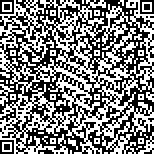郄淑燕,王丛笑,孙晓静,汪杰,宋德军.局部振动治疗对颈肩痛患者肌肉物理特性及表面肌电信号的影响[J].中华物理医学与康复杂志,2017,39(1):30-33
扫码阅读全文

|
| 局部振动治疗对颈肩痛患者肌肉物理特性及表面肌电信号的影响 |
|
| |
| DOI: |
| 中文关键词: 局部振动 颈肩痛 肌肉物理特性 表面肌电 |
| 英文关键词: Focal vibration Neck-shoulder pain Muscle properties Surface electromyography |
| 基金项目: |
|
| 摘要点击次数: 2453 |
| 全文下载次数: 3465 |
| 中文摘要: |
| 目的观察单次局部振动肌肉刺激治疗对颈肩痛患者肌肉物理特性及肌电信号的影响以及其发挥作用的有效时长。 方法筛选符合入选标准的颈肩疼痛患者34例,应用局部振动肌肉刺激仪对斜方肌和肩胛内侧缘进行治疗,每个部位治疗30s,重复3~5次。分别于治疗前、治疗后即刻、治疗后2h和治疗后6h,采用目测类比法(VAS)评分对患者的疼痛程度进行评估;采用MyotonPRO数字化肌肉功能评估系统评估患者双侧颈肩部上斜方肌的肌肉状态,包括F-振动频率、D-振幅的对数衰减值、S-动态硬度;采用Noraxon 16通道表面肌电仪记录患者双手上举时上斜方肌的sEMG信号,取时域指标积分肌电值(IEMG)、平均肌电值(AEMG)及频域指标中位频率(MF),并比较治疗前后和治疗后不同时间点的肌电信号的变化。 结果治疗后即刻患者的F、D、S值(12.55±2.13、0.94±0.16、200.70±55.38)及治疗后2h患者的F、D、S值(12.83±2.22、0.99±0.16、205.80±57.80)均较患者治疗前(15.24±3.22、1.14±0.20、265.50±78.57)明显降低(P<0.05),VAS评分亦显著下降(P<0.01),治疗后6h与治疗前比较,F、D、S、VAS评分差异均无统计学意义(P>0.05)。双上肢上举过程中,治疗后即刻疼痛侧上斜方肌的AEMG(88.50±19.09)较治疗前(48.24±13.41)显著升高(P<0.01),IEMG(404.40±190.04)和MF(0.15±0.15)仍明显高于治疗前(171.00±47.64、0.04±0.01),差异有统计学意义(P<0.05)。治疗后2h患者的AEMG(79.28±18.18)和IEMG(383.20±191.07)均较治疗前明显升高(P<0.05),而MF与治疗前比较差异无统计学意义(P>0.05)。治疗后6h,AEMG、IEMG和MF与治疗前比较,差异均无统计学意义(P>0.05)。 结论单次局部振动治疗可以降低颈肩痛患者颈肩部肌肉的硬度,缓解疼痛,激活肌肉收缩强度,治疗效果可以持续2h。 |
| 英文摘要: |
| Objective To evaluate the effects of focal vibration on the physical properties and surface electroyograms of persons with neck-shoulder pain. MethodsThirty-four patients with neck-shoulder pain received 3 to 5 applications of vibratory stimulation of the inner side of the trapezius and scapula for 30 s each time. They reported their pain level using a visual analogue scale. Muscle tone and the elasticity and stiffness of the trapezius muscle were measured bilaterally using a MyotonPRO Muscular Function Evaluation System. Surface electromyography (sEMG) was performed bilaterally during arm extension while standing. The testing was repeated four times: before treatment (baseline), immediately after treatment (IAT), 2 hours after treatment (2AT) and 6 hours after treatment (6AT). ResultsThere was a significant reduction in reported pain at IAT and 2AT compared to baseline, but no significant difference was found between the perceived pain at baseline and at 6AT. The values of oscillation frequency, logarithmic decrement and dynamic stiffness had decreased significantly at IAT and 2AT compared to baseline. The average AEMG during upper-arm flexion of the trapezius on the painful side had increased significantly at IAT compared to that before the treatment, while the average IEMG and MF were both significantly higher than before the treatment. At 2AT the average AEMG and IEMG were both still significantly higher than at the baseline, but there was no longer a significant difference in the average MF. By 6AT none of the three indicators differed significantly from those before the treatment. ConclusionsA single session of focal vibration can relieve pain, increase muscle activation as well as decrease muscle stiffness for people with neck-shoulder pain within 2 hours. |
|
查看全文
查看/发表评论 下载PDF阅读器 |
| 关闭 |